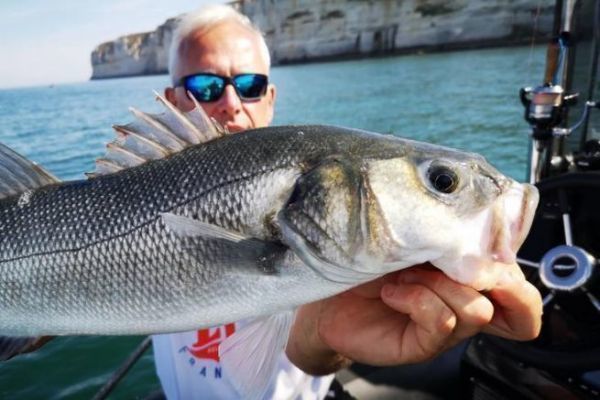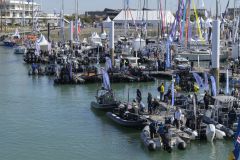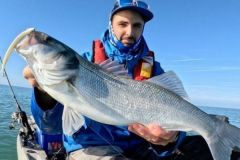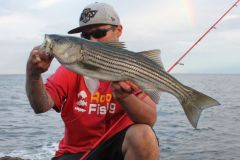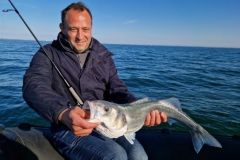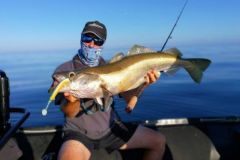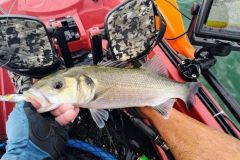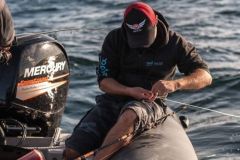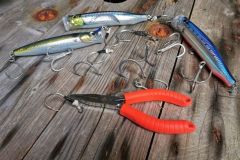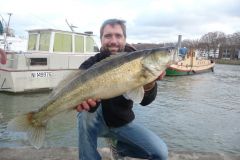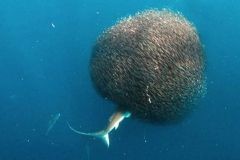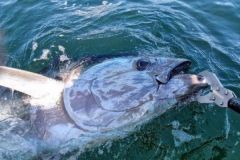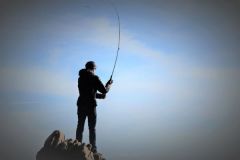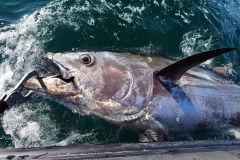Understanding the tides
Tides are the result of gravitational forces exerted by the moon and sun on the oceans. They are characterized by cycles of high and low tide, with tidal currents influencing the movement of fish. A few simple definitions:
- High tide: period when sea level is at its highest.
- Low tide: period when sea level is at its lowest.
- Tidal current: horizontal movement of water due to the rise and fall of the tides.
- Tidal coefficient: index that measures the amplitude of the tide, influencing the strength of currents.
Impact of tides on sea bass behavior
Sea bass are opportunistic fish, feeding on currents and water movements. During rising and falling tides, currents carry nutrients and prey, attracting sea bass to specific areas.
- Rising tide: sea bass tend to move closer to shore to feed, taking advantage of currents that bring in prey.
- Ebb tide: sea bass can move into deeper water, following the movement of prey.
This explains why, in certain areas, sea bass are not caught in the same place depending on the direction of the tide
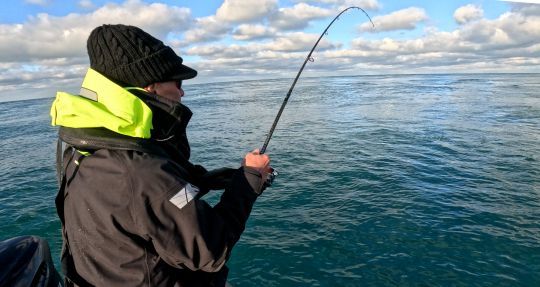
The best times for bass fishing
Rising tide vs. falling tide
- Rising tide: generally considered one of the best times to fish for sea bass. The fish are active and feeding close to shore. Sometimes even very close to shore to pick up crabs and other delicacies from the pebbles
- Ebb tide: can also be productive, especially at the start of the ebb, when bass follow their prey into deeper water. Look for current veins during this period.
Tidal slack water
Slack water periods, when currents are weak, can be less productive. Sea bass are less active and feed less. The absence of currents also means that bass can spread out all over the place, and spots are less marked. But the sand eels are coming out, and ridins can save the day.
Key times
Two hours before and after high tide: these periods are often the most productive, as sea bass are active and feeding.
Two hours before and after low tide can also be favourable, especially if currents are strong.
Tide reversals are really strategic moments to be privileged.
Tide-dependent fishing techniques
- Rising tide: use surface lures and natural baits to attract bass close to shore; or light, spinning soft lures. Traction is preferable.
- Ebb tide: opt for heavier lures and baits that can reach deeper water. Soft lures with lead heads that scrape the bottom are the way to go.
There's no such thing as truth in fishing, and you'll always find days "unlike any other" that work in the opposite direction to everything we've said here.
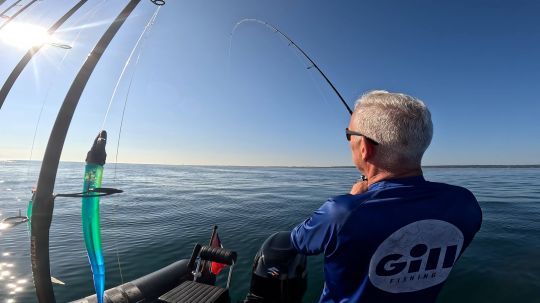
Understanding the tides and their impact on sea bass behaviour is essential to optimize your fishing sessions. By following the tips and techniques presented here, you'll increase your chances of a successful fishing trip. But there's no substitute for experience, because every spot has its own specificities, and sea bass know them better than we do. Don't hesitate to experiment and adapt your techniques - there's only one secret! TEST.

 /
/ 